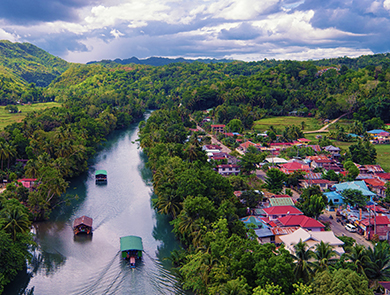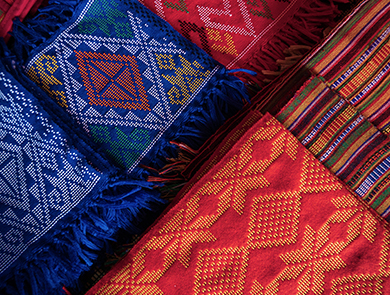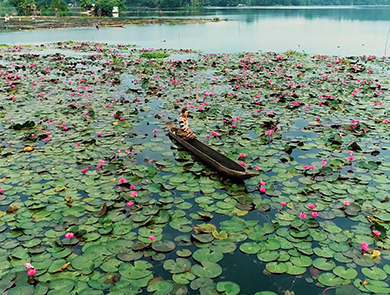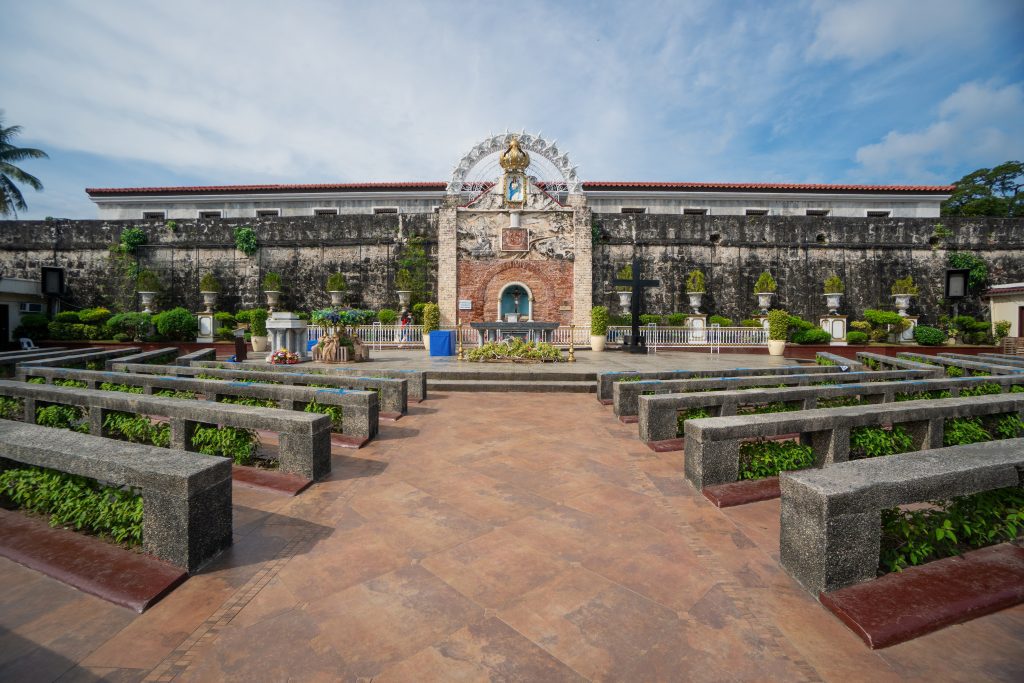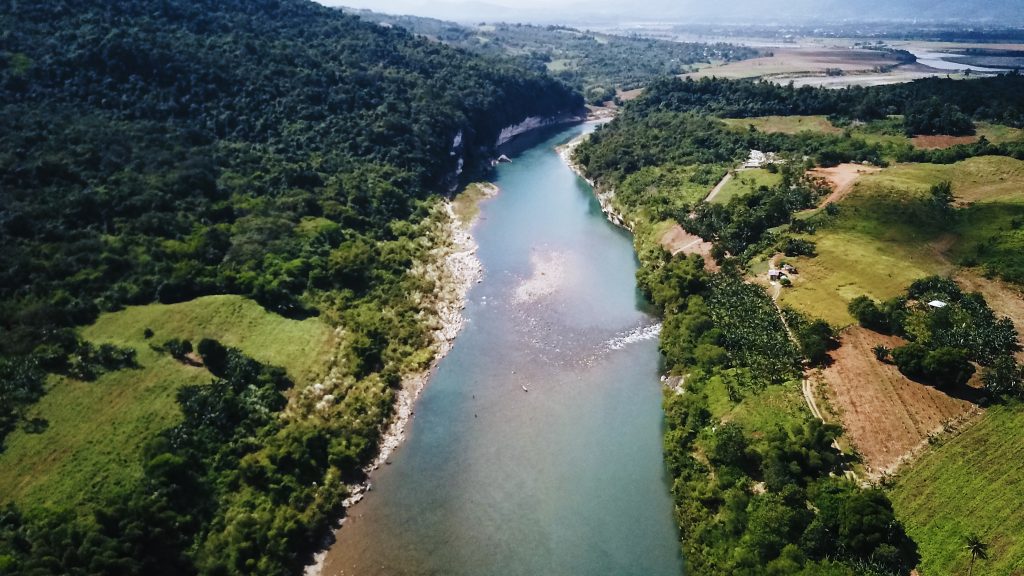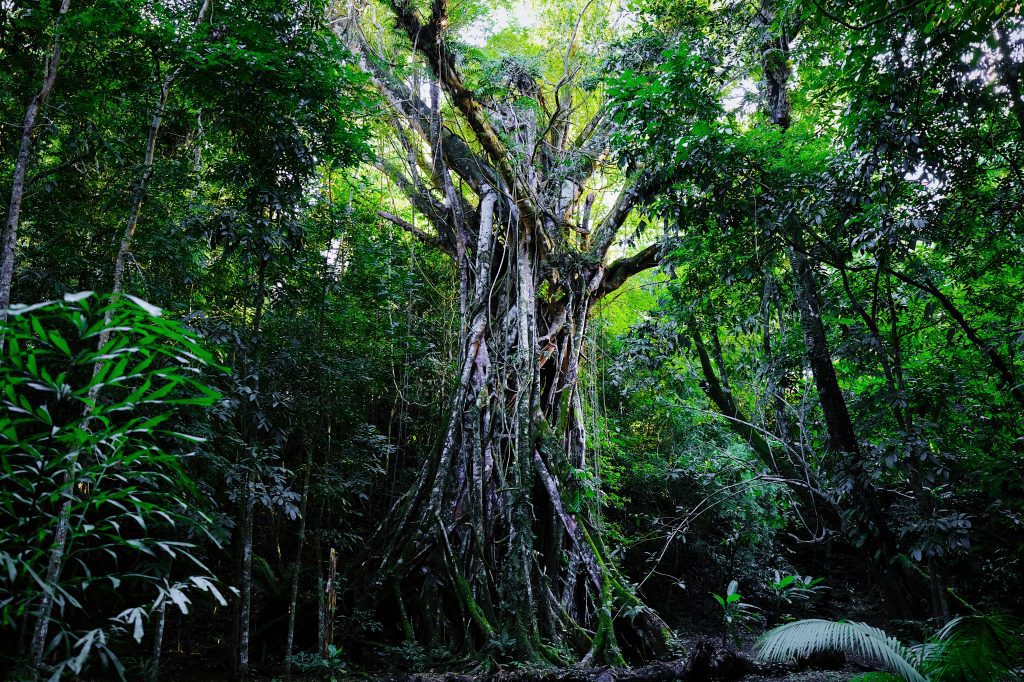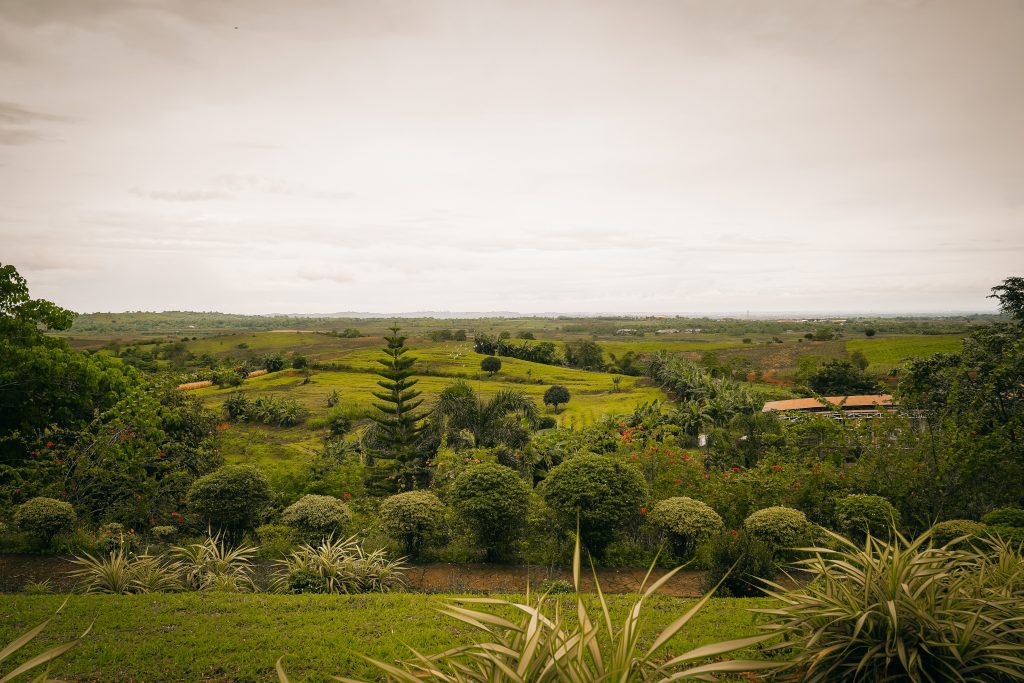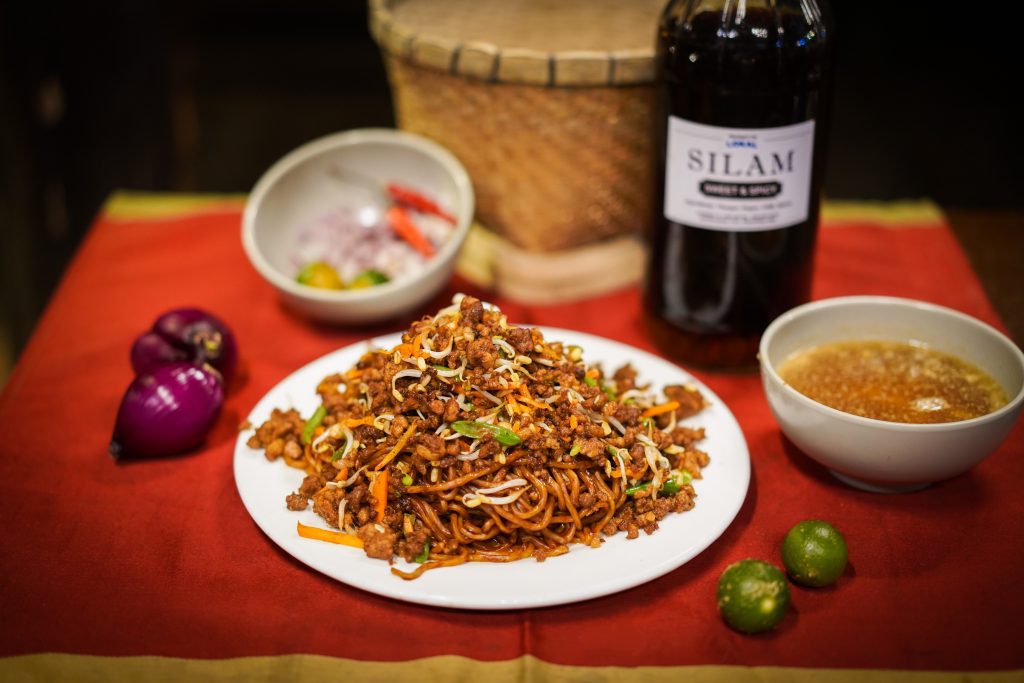The tourism office in Malaybalay, the capital of Bukidnon, was suddenly filled with warmth and cheer as a man entered the room. Wearing a red patterned Bukidnon-Tagoloanen garb, he emanates unmistakable authority. Yet, he puts the room at ease and greets everyone with a smile.
This man is Virgilio Rayos Namoc Sr. or commonly known by the Bukidnon-Tagoloanen Ancestral Domain as Datu Balina-o. He is the tribe’s anointed leader in Sumpong, Malaybalay through consensus building for more than three decades now. The ancestors handed him the responsibility of ensuring peace and harmony among the Tagoloanen families as a Datu since 1987.
Family man
Apart from this, he was also a former teacher, principal, and supervisor in the Department of Education office in the province. After 42 years of government service, he retired in 2013. Later that day, Namoc would also fulfill the role of a news writer in DXBU 104.5FM, Bukidnon State University’s indigenous peoples-focused radio program.
On top of it all, he is a family man, and is married to Estela Comisio with four children who now also all have their own families.
“Today, I am 37 years old,” he says jokingly. “Baliktarin mo ’yan. I did not even think that I’d reach this time and age. However, through God’s will, mayroon pa pa lang we have to accomplish.” (Just interchange the two numbers. I did not even think I’d reach this time and age. However, through God’s will, there’s still something we have to accomplish.)
The Datu commences with a ritual that pays respect for any intervention with the spirits called Pananghid, a practice that he learned from the tribe’s forefathers. This means asking for permission. It included a live chicken, a red and white piece of cloth, and seven coins. To give his interview and tell the story of his life and the tribe, this method was the green light. He starts speaking in their dialect and at some point, he explains the whys and hows of the ritual.
A datu can be a native royalty, a Filipino chieftain and his mere existence up to this day is a powerful delineation of how the culture was preserved and still respected in this part of the country. Encountering and talking to one is surreal, like a character in our history books coming to life.
Community challenges
Shortly after the solemn ceremony of Pananghid, he sits and allows us to get to know him better.

“I did not even aspire to become a datu,” Namoc reveals. “Because as a young boy, there were so many challenges in our community. But the council of elders in our community said, who else will have to lead (the) people in our community? So our elders told me (to) look around and suggest, and identify who will have to run our tribe.”
He giggled as he reminisced, which made the others in the room laugh, too.
“But, it was a big challenge for me because I was still a young boy, full of mischievous activities and that is why I am known as somebody who is mischievous in Malaybalay,” he says. “However, the elders saw that this mischievous boy will someday become a leader of the tribe. So by God’s grace, today, I am called Datu Balina-o.”
After his retirement eight years ago, he originally thought of resting. But then he realized that his kababayan need him as their leader.
“That was given to me by our elders, to lead our people, and today, I am also a member of the council of elders of the Bukidnon-Tagoloanen to help make our tribe successful through our plans and programs,” Namoc says, mentioning ADDSPP or the Ancestral Domains Sustainable Development and Protection Plan.
Ancestral domains
According to the National Commission on Indigenous People, the ADDSPP refers to “the consolidation of the plans of indigenous people within an ancestral domain for the sustainable management and development of their land and natural resources as well as the development of human and cultural resources.”

This is where his involvement in tourism takes place as well in coordination with officers when it comes to decision-making. Namoc takes pride in what Bukidnon has to offer in Malaybalay, in Manalog, in Kibalabag, in Kaamulan, and more, filled with mountain ranges, falls, springs, and other recreational places. Their post-pandemic plans include establishing requirements and protocols before tourist spots reopen.
He expresses so much thanks for talking about the lumad, our indigenous people here in their ethnic community in Bukidnon.
“Kamusta na po tayo ngayon? We have a lot, wide and vast lands that are undeveloped. Sino ngayon ang naging successful? Migrants, not Bukidnon(-Tagoloanen), not lumad. No, we cannot blame them, but we have to also evaluate,” (How are we today? We have a lot, wide and vast lands that are undeveloped. Who became successful instead? Migrants, not Bukidnon(-Tagoloanen), not lumad. No, we cannot blame them, but we have to also evaluate,) he says, adding that one of the biggest challenges he’s faced as a datu is the conflict of ancestral lands.
“Why is it that they have progressed and then we remained with this situation as of today?” says Namoc. “But I believe it’s not poverty. It is through the help of the government and we, the insistence of the lumad, to help ourselves. ‘Yan ang sinasabi ko, kailangan natin tulungan ang ating sarili. I am looking forward (to) the future generation.” (That’s what I tell them, that we need to help ourselves. I am looking forward to the future generation.)
If we were to list down what we’ve picked up so far in the values that make a datu, humility and gratitude are two of the things that are on top of it. Datu Balina-o is a man of wisdom and very strong communication. All of these traits, including being responsible and approachable to all, were backed by the people he has worked with.
Namoc says that in any ancestral domain, there should be peace and harmony. “We cannot have development unless there is peace,” he explains. “Peace cannot be won by bullets alone, unless we have to sit down and work (on) solutions on how we can possibly agree on things that we disagree (with).”






